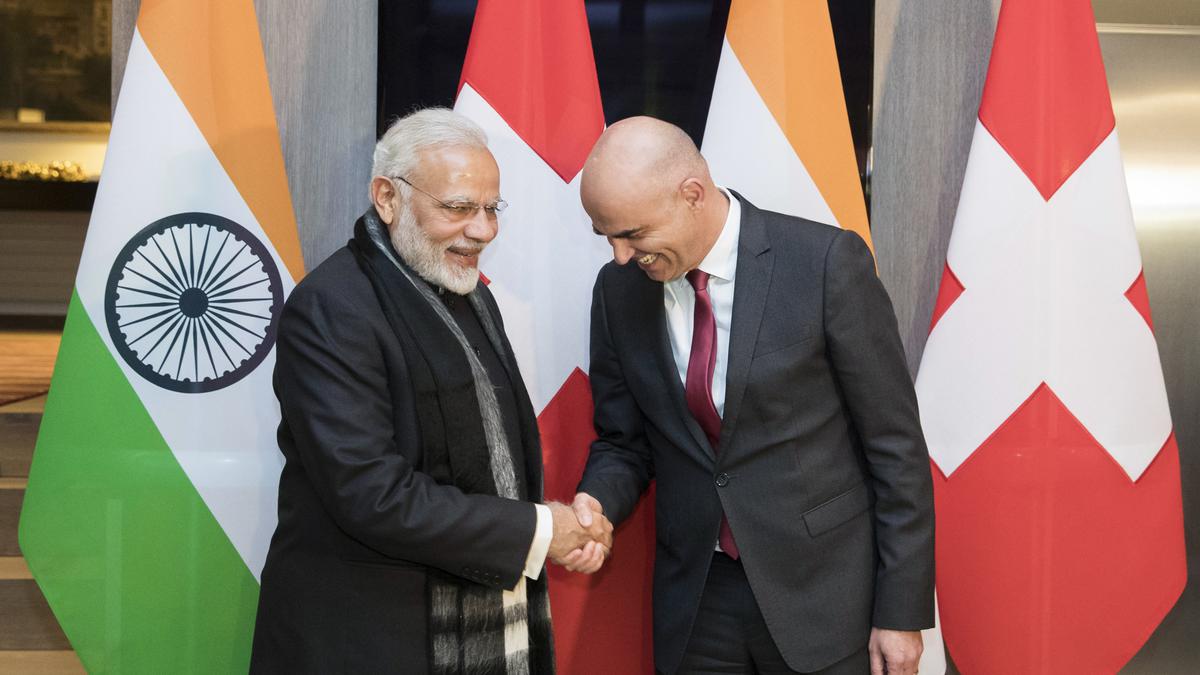
India to receive Trade Ministers from Switzerland, Norway for ‘critical talks’ this week
The Hindu
India remains optimistic of reaching an agreement on a trade pact with Nordic countries in the coming months, despite unresolved issues. MEA Secretary (West) Sanjay Verma visited Switzerland and Liechtenstein to discuss the India-EFTA TEPA and BIT. India-EFTA talks have been ongoing for 15 years, but have yet to be closed. India-U.K., India-EU, and India-Australia FTAs are still in progress, while India-Canada CEPA is unlikely to be resumed.
As Trade Ministers from Switzerland and Norway visit Delhi this week, officials say they remain optimistic of reaching an agreement on a trade pact with Nordic countries in the next few months, although several outstanding issues remain and Indian trade negotiators are busy trying to close other FTAs with the U.K. and Australia. Talks about TEPA (Trade and Economic Partnership Agreement) and a Bilateral Investment Treaty (BIT) between India, and four European countries who make up the European Free Trade Association (EFTA), outside the European Union (EU): Iceland, Liechtenstein, Norway and Switzerland, began 15 years ago, and despite 20 rounds of negotiations, they have not yet been closed, with attempts to sign an agreement before the General Elections due in India in May 2024.
Sources said this week would be a “critical moment” in whether the India-EFTA negotiations can find a breakthrough. The four-nation grouping has already signed 30 free trade agreements (FTAs) with other countries, and has ongoing negotiations with India, Thailand, Malaysia, Vietnam, Kosovo and the South American MERCOSUR.
The two-day visit of Norwegian Trade Minister Jan Christian Vestre and Swiss State Secretary for Economic Affairs Helene Budliger Artieda on December 12 will follow a visit by Ministry of External Affairs (MEA) Secretary (West) Sanjay Verma to Switzerland and Liechtenstein for Foreign Office Consultations (FOC) on December 7-8 where the India-EFTA TEPA and BIT were discussed.
“Both sides appreciated the ongoing discussions on India-EFTA TEPA and Bilateral Investment Treaty between India and Switzerland,” the MEA said in a statement over the weekend, adding that the TEPA had also been discussed during Mr. Verma’s visit to Liechtenstein.
Prime Minister Narendra Modi also met with President of the Swiss Confederation Alain Berset on the sidelines of the CoP28 Climate Summit in Dubai on December 1.
Officials on both sides declined to comment on where the logjam in talks is at present. However, they said cutting down trade tariffs, mobility of services and opening market access for companies on both sides remained unresolved.
“Regarding trade in goods, India applies high tariffs on many of the EFTA countries’ exports. We obviously look for a substantial reduction of trade barriers, particularly for such high-value-added products as machine tools, advanced chemicals and pharmaceuticals, Swiss chocolate, Norwegian and Icelandic fish, and so on,” Ms. Artieda told news agency PTI in an interview earlier this year.













